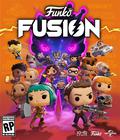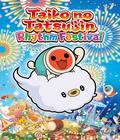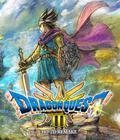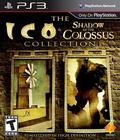Certain developers are known for putting out excellent titles. Team ICO has only released two games in the past decade, but both games are considered among the most noteworthy and influential titles ever released. Their games are known for amazing art design, fairy-tale-like atmosphere and unusual storytelling method. Unlike many modern games, the stories are light on cut scenes and exposition; they give you a rough idea of the plot and invite the player to figure out the full story on his own.
However, both games suffered from some problems. The first game, Ico, didn't sell well at first, and eventually copies became difficult to find. The second, Shadow of the Colossus, strained the PS2's hardware to the point where one was lucky to get a frame rate above the single digits in some of the more intense sequences. The Ico and Shadow of the Colossus Collection solves these problems while giving gamers a chance to experience both games in one convenient package.
Ico
The first game in the collection, Ico is the story of the titular boy, who looks normal except for the two black horns on his head. In his home village, this marks him as a sacrifice. The story begins with him being brought to a mysterious castle and locked in a cage, seemingly to die. A minor imperfection in his cage allows him to escape, but that isn't the same as being free. Ico is alone in a large and seemingly abandoned castle and must find a way out if he wishes to survive.
Ico is a mix of puzzle and platforming with a twist. Ico is fairly athletic and strong; he's no Prince of Persia, but he can climb, drop from impossible heights, push large objects and is tougher than you'd expect from a boy who looks about 13 years old. Most of the puzzles are well designed but familiar puzzle quests. You have to pull switches, shove blocks and find out how to get from point A to point B. Some of it may feel familiar, but much of that is because many games have copied Ico. The original still stands up exceptionally well today. Each puzzle is unique and interesting, and the pacing is top-notch.
So what is the twist? Ico isn't alone. Early in the game, you'll meet the castle's only other living inhabitant, a young princess named Yorda. She doesn't speak the same language as Ico, but they have to work together. Compared to Ico, Yorda isn't very athletic: She can't climb very high, she doesn't run very fast, and she can't jump very far. However, she is the only one who can open certain doors that block Ico's path. To advance in the game, you have to get Ico from one point to another and guide Yorda as well. She can be guided by taking her hand or by calling to her, and she'll follow Ico almost without question. If she can't make a jump, she'll tell you so by shaking her head, and you'll have to find another way to get her around.
The challenge comes when you encounter the castle's other inhabitants. From time to time, a mysterious black portal appears on the ground and emits strange shadow monsters, which ignore Ico but instantly rush toward Yorda. They attempt to drag her back to the portal from which they spawned. If you let them get Yorda to the portal, the game is over. Initially, Ico's only defense against them is a hefty stick. Fortunately, the shadow beasts are not very durable, so a few good smacks with the stick can drive them away. The challenge is mostly in making sure that they don't snag Yorda while Ico is distracted.
While Ico is fantastic, it isn't without its flaws. The platforming can be occasionally awkward. There are situations where it appears that you can jump to a place — only to find that it's a leap to a painful death. This is only doubled with Yorda, who won't make wrong leaps, but she'll sometimes be hesitant to make correct leaps. Sometimes, if you're not standing in exactly the right place to catch her, Yorda will shake her head and refuse to jump. This can be frustrating if you're new to the game and don't know that you are in the correct spot, but Yorda is just being picky. It's a minor problem, though, and you'll quickly learn exactly how to work around the control's foibles. The combat in the game is … well, boring. You hit the shadows with a stick, they run away, and you repeat. Even when you get new weapons, it doesn't get more interesting. It's never unpleasant, but compared to the platforming and exploration, the combat is easily the weakest point of the game.
Shadow of the Colossus
The second game in the collection, Shadow of the Colossus, remains one of the most talked-about PS2 games. You play as a boy named Wander who travels to a strange land to save a young girl. His only companions are a horse named Argo and a mysterious voice that makes him an offer: Slay the colossi that roam the land, and the girl will be saved. Wander sets off, aided only by Argo, to find and kill the monsters. With each beast slain, more of the story is revealed, and the girl comes one step closer to rebirth.
Shadow of the Colossus is a game simultaneously full of story and almost absent of any. There are only a small handful of cut scenes in the game, and most are light on details. Much of the plot is left to be inferred by the player, but the way in which the story is told tells you everything you need to know, even without saying a word. It's a rare example of a game that knows to show instead of tell, and it manages to convey a surprisingly moving and emotional story while using only the barest of tools.
Shadow of the Colossus is not a God of War-style action game. Wander only has a few weapons to his name — a sword and a bow — and neither is particularly special. The sword can reflect light to show you the location of a nearby colossus, but you can't depend on it to be anything but a sturdy stabbing weapon. The bow is a simple bow and arrow. Wander has an unlimited supply of arrows, but there's nothing special about them. An arrow in the right place can be plenty effective on its own, though.
Your enemies, on the other hand, would make many of Kratos' biggest enemies feel small. The titular colossi are huge beasts that roam the desolate land. Each is different, although they all have a few things in common. They're massive and can only be defeated by repeatedly stabbing the glowing sigils that appear on their bodies. It's no easy task because the sigils tend to appear high up, on the head or thereabouts. To reach and stab the sigil, Wander has to find a way to climb up onto the colossus and scale the beast until he can reach the weak point. Some colossi are towering bipedal beasts while others are quick quadrupeds. You'll even encounter ones that dive into sand or swim underwater. Each colossus is like a puzzle, requiring the player to figure out how to best assault the beast before taking it down.
It's very easy to see Shadow of the Colossus as nothing but a series of extended boss fights, but that doesn't do credit to the game. The world you explore, while empty and bleak, is simultaneously engrossing and amazing. Traveling along the deserted world, only to see in the distance a ruin or a cave, makes you want to blow off the colossus hunting and just explore. There are some rewards for this, such as hidden creatures that can improve your health, but for the most part, the world is simply there to explore. Shadow of the Colossus has one of the most beautiful worlds in gaming. There's also a good amount of extra content, such as time trials, but they won't extend the game length very much.
There are a few complaints about Shadow of the Colossus, but most are fairly minor. It doesn't have a lot of replay value. Once you know how to kill the colossi, all that is left to do is explore the world. There are about eight hours of gameplay here, assuming you take it reasonably slow, but once you're done, that's it. You could replay them, as the colossus battles are still some of the best in video game history. The controls can be a tad awkward and take some getting used to; there's nothing wrong with them, but there is certainly a learning curve on how to do everything. Another minor complaint is that the game might not give you enough time to figure out things on your own. If you take too long to kill a colossus, the game starts to offer hints. It's nice to have the help, but it would be better if it were optional.
Perhaps the most impressive part of the collection is the fact that both games look incredibly good. They're obviously games from the previous console generation, but the art design is so strong that they stand up much better than some of the other HD collections that we've seen. In particular, Shadow of the Colossus is absolutely breathtaking. It benefits the most from the perfectly smooth frame rate. The PS2 version suffered from extreme slowdown and frame dropping when things got too hectic, but I didn't notice that in the PS3 version. The end result is a game that looks incredible even many years and an entire console generation after its original release. Both games also support 3-D televisions and look quite good on one. The sound effects and music remain top-notch, and Shadow of the Colossus battle music remains some of the most immensely engaging that I've ever heard.
The Ico and Shadow of the Colossus Collection is easily one of the best buys you can make on the PS3. Both titles have aged incredibly well and remain some of the most enjoyable games on the market. They're unique, interesting and exciting all at the same time. They have their foibles, but nothing that detracts from the overall experience. Either game alone would be worth the full price, but it's impossible to turn down both titles in one box for only $40. If you own a PS3, you must purchase The Ico and Shadow of the Colossus Collection.
Score: 9.5/10
More articles about ICO and Shadow of the Colossus Collection











 Relive the magic and fall in love with these PS2 classics all over again, remastered in HD with full stereoscopic 3D support, or discover the wonder of the two of gaming’s most beloved games for the first time.
Relive the magic and fall in love with these PS2 classics all over again, remastered in HD with full stereoscopic 3D support, or discover the wonder of the two of gaming’s most beloved games for the first time.





























